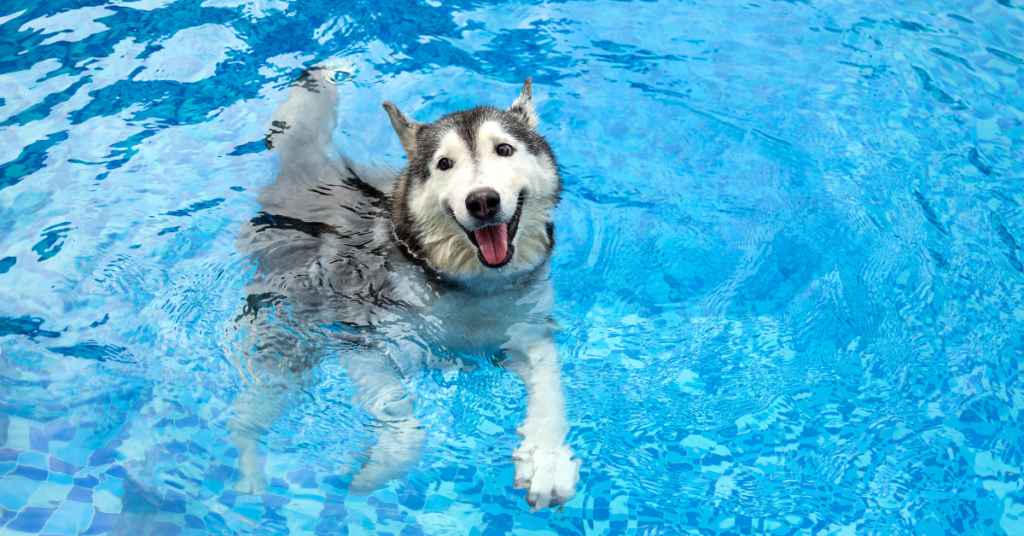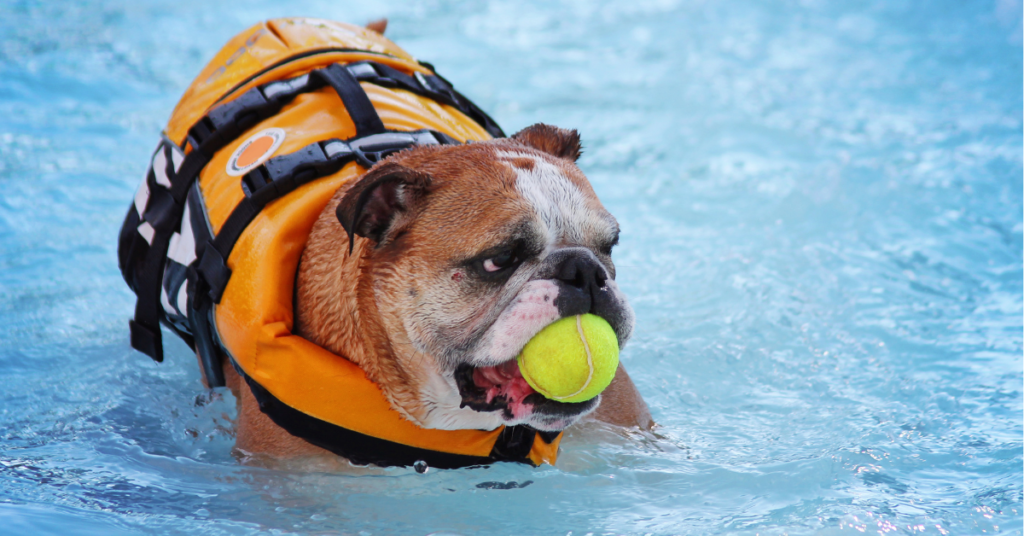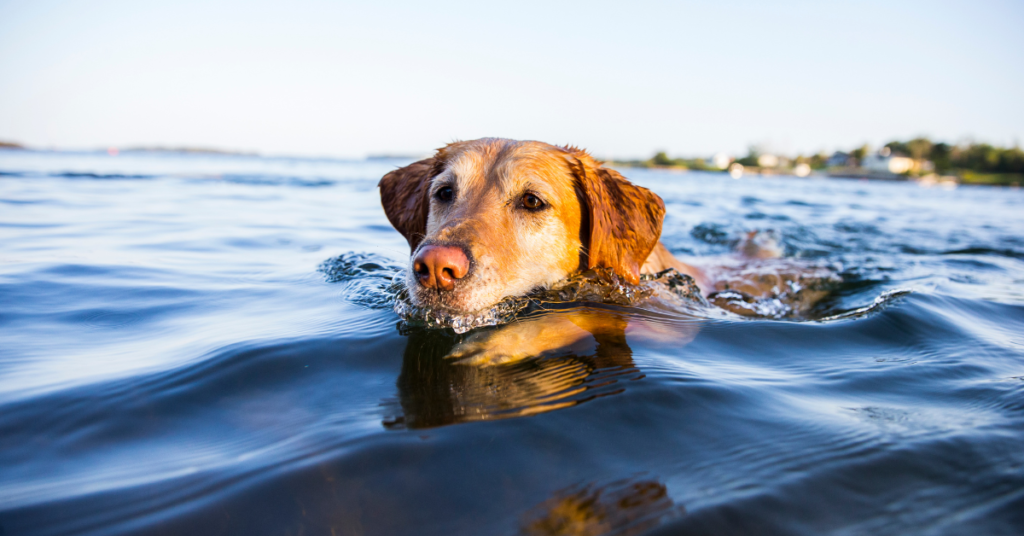Every dog has its unique personality, and when it comes to water, they either can’t wait to dive in or try to stay as dry as possible. Whether your dog is a natural-born swimmer or avoids water at all costs, it’s important they are comfortable around water to ensure they stay safe. Especially if you love being around water yourself. But can all dogs swim?
Can all dogs swim?
It’s easy to assume that all dogs swim. While many dogs have the natural instinct to ‘doggy paddle’ in the water, some dogs may struggle more than others to swim. There are a lot of factors that can determine whether dogs are natural swimmers.
These factors include, but are not limited to:
- Size
- They have a short snout
- They have double coats
- Breed – some dog breeds that can’t swim include boxers, bulldogs, basset hounds, shih tzus, and corgis.
If your dog’s breed naturally can’t swim or has the physical characteristics of a dog that struggles, it might be better to keep them on dry land.
However, if they just love the water, all is not lost. You can ensure their safety in the water by monitoring them closely, fitting them with a dog life jacket, keeping them in shallow water, and fencing off your backyard pools.

How to teach a dog to swim
If you love the great outdoors and want to take your dog on adventures near water, you can teach them how to swim or improve their abilities. Whether your dog is a natural swimmer, struggles to stay afloat, or just wants to keep dry, teaching your dog how to swim is essential for its safety. Training your dog to swim takes patience and understanding, as each dog is different and has different levels of abilities.
Dog swimming lessons can be done at a nearby lake or in the pool in your backyard. You can also find some dedicated dog swimming pools for a more controlled environment for your lessons. Before you begin, you first need to understand your dog’s swimming abilities. Follow these steps and bring plenty of treats to train your dog how to swim.
Safety first
Before you begin teaching your dog how to swim, you want to ensure you are in a safe, quiet environment that isn’t stressful or overwhelming for your dog. Depending on your dog’s ability level, you can fit them with a life jacket, but always be sure to keep them on a leash as they learn.
Get your dog accustomed to water
The next step you want to take is to ensure your dog feels comfortable being around and entering the water. Some dogs will run straight for the water without hesitation, but some may be more hesitant to get in. You want to gradually introduce them to the water by standing in shallow water with them.
Encourage your dog to get in and out of the water with treats and toys
Treats and dog water toys can be used to encourage a positive association with swimming. You can hang out with your dog and feed them treats as you remain in the water. You can practice leading your pup in and out of the water by calling them to water and giving them a treat once they’re in. Then throw their favorite dog toy into the water for them to retrieve.
Advance to deeper water
Once your dog shows they are confident and comfortable in shallow water, gradually start moving towards deeper waters each lesson. Taking it one step at a time can help ensure your dog feels comfortable with each step into deeper waters.
Support your dog
It’s important that you always stay with your dog as they get used to the water. Lead your dog into the water with a treat and don’t let them leave your sight. You can guide them using your hands when needed but support their belly in deeper water. Allow them to swim for five to ten seconds, and then direct them out of the water with a treat. If your dog takes well to swimming, be sure to keep a close eye on them.
Expand and reinforce swim training
After you are confident your dog knows how to swim, you can move on to more advanced activities, such as playing games in the pool or stand-up paddle boarding. You can even teach your dog how to safely accompany you on a kayak. You can find the best kayaks for dogs to maximize your and your dog’s safety.

5 water safety tips
Whether your dog is an experienced swimmer or still learning the ropes, water safety should always be a priority. Here are some important safety considerations to remember as you prepare for lessons and beyond.
1. Invest in a life jacket
Life jackets can keep your dog safe if they tire out easily during their swim or if they are a breed that isn’t made for swimming.
2. Bring fresh, clean water
You never want to allow your dog to drink water from a lake, river, or ocean, as it can cause serious health issues. Always bring plenty of fresh water and allow for hydration breaks.
3. Don’t throw your dog into the water
Throwing your dog in the water can create a negative association with water and that may prevent them from wanting to swim again.
4. Be mindful of the temperature of the water
If the water is too cold, it could cause your dog to suffer from hypothermia or “cold tail,” which prevents them from being able to use their tail.
5. Keep water activities short
Water toxicity can occur when your dog swallows too much water while swimming.

Conclusion
Not all dogs are natural swimmers, but you can help your dog swim stronger with dedication and patience. By teaching your dog to swim, you can help them swim safely to bring them along on your outdoor adventures. Whether you want to take your dog to the beach, on a serene kayak ride, or build a backyard swimming pool, teaching your dog to swim takes patience, but it’s well worth the effort.



